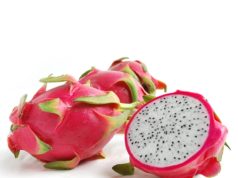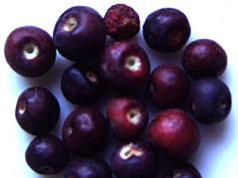Mango (Mangifera indica L.) is one of the most economically important and a popular Asian fruits with delicious taste, excellent flavour, attractive fragrance, rich in vitamin-A and C. India is the world’s largest mango producer, growing nearly 1000 varieties and contributing over 50 per cent to the world’s total mango production of about 23 million metric tons. States of Uttar Pradesh and Andhra Pradesh are having the largest area under mango each with 25% of the total area followed by Bihar, Karnataka, Kerala and Tamil Nadu.
Out of the 1000 varieties of mango in India, the commercially grown varieties in different states are Alphonso, Bangalora, Banganpalli, Bombai, Bombay Green, Dashehari, Fazli, Fernandin, Himsagar, Kesar, Kishen Bhog, Langra, Mankhurd, Mulgoa, Neelum, Samarbehist, Chausa, Suvarnarekha, Vanaraj and Zardalu.
 Mango crop suffers from a number of mango diseases at various stages of its development. Among the various mango diseases that attack mango crop, gummosis is of great economic importance since the trees die within a very short time. Gummosis, a condition of resin ooze from splits that develop on major limbs is one of the symptoms of sudden decline of mango. It has emerged as a new threat of extinction as mango trees are becoming victim at an alarming ratio especially in the orchards of India, Brazil, and Pakistan.
Mango crop suffers from a number of mango diseases at various stages of its development. Among the various mango diseases that attack mango crop, gummosis is of great economic importance since the trees die within a very short time. Gummosis, a condition of resin ooze from splits that develop on major limbs is one of the symptoms of sudden decline of mango. It has emerged as a new threat of extinction as mango trees are becoming victim at an alarming ratio especially in the orchards of India, Brazil, and Pakistan.
Symptoms of mango decline
Decline disorders are recognized in virtually all mango-producing regions of the world. In most cases, the disease has been characterized by leaf drooping and drying; bark splitting, gum secretion from branches and main trunk, bud necrosis, dieback, vascular discoloration and death of the whole tree. The conducting tissues are damaged, blocking the food supply to roots and other parts, resulting in partial to full drying of the plant. As a preliminary symptom, drying of tip, discoloration and darkening of the bark from the tip becomes visible.
It progresses downward involving bigger branches. As a result, the leaves shed. Sometimes, gum oozes from the diseased portions. Bark splitting or cracking may also be noticed in severe cases. These symptoms are found alone or in combination with other symptoms in different mango orchards. On removal of the affected bark, a thick liquid with foul smell ooze out.
As the infection progresses, tree death occurs, perhaps 6 months from first appearance of symptoms. Initially, a portion of the bark is affected and gradually the whole tree trunk rots causing collapse of the tree. The wood is stained dark brown, spreading from a point of infection.
In India, the gummosis in mango trees was often accompanied by damage caused by trunk borers resembling Batocera reformaculata from February to October. The grubs cause severe damage by feeding on the bark inside the trunk, boring upward making tunnels, thus weakening and causing hindrance to the transport of water and nutrients from roots to shoots resulting in wilting and drying of the shoots.
[indeed-social-locker sm_list=’fb,tw,go1′ sm_template=’ism_template_1′ sm_list_align=’horizontal’ sm_display_counts=’false’ sm_display_full_name=’true’ locker_template=2 sm_d_text='<h2>This premium content is locked</h2><p>Share This Page To Unlock The Content!</p>’ ism_overlock=’default’ ]
Acting as a wounding agent and vector, the trunk borers probably assist in rapid spread of this disease in the orchard. Damage caused by a bark beetle (Cryphalus scabrecollis) was also reported to be associated with the disease. A close inspection of dried plants often reveals tiny holes, numerous small beetles running here and there under the bark, probably acting as carriers of this disease.
Factors enhancing incidence of mango decline
The mango diseases incidence is high during June, July and August and low during cool months from November to February. Perennial crops like mango are the most common hosts of devastating plant pathogens. Most of the neglected mango orchards predispose the trees to attack by different fungi, disseminating infection to nearby trees or neighbouring orchards. Once the disease establishes, it keeps on aggravating till the heavily infested trees are up rooted.
Causes of mango decline
A number of biotic and abiotic factors including fungi, nematodes and nutrient deficiencies such as zinc and iron were reported to be associated as mango diseases & cause for mango decline. A number of fungi have been reported from several decline affected mango orchards including Alternaria alternata, Botryodiplodia theobromae, Cladosporium sp., Ceratocystis fimbriata, Colletotrichum gloeosporioides, Dothiorella dominicana, Fusarium oxysporum, F. semitectum and F. solani, Lasiodiplodia theobromae, Penicillium sp., Pestalotiopsis sp., Phomopsis sp. and Nattrassia mangiferae.
However, studies made by several workers have established that gummosis is caused by Lasiodiplodia theobromae L. (Syn: Diplodia theobromae, Botryodiplodia theobromae). The fungus is the asexual state of Botryosphaeria rhodina and like many other species of Botryosphaeria, exists as an endophyte in asymptomatic tree tissue. This fungus has a wide host range and attacks more than 280 species of plants in different parts of the world. Almost all the commercial mango varieties are susceptible to this disease.
Bark beetles (Hypocryphalus mangiferae) and several plant parasitic nematodes like Xipinema sp., Tylenchus sp., Longidorus sp., Hemicriconemoides sp., Aphelenchoides sp., were also found to be associated with mango decline affected trees along with Lasiodiplodia theobromae L. and other fungi.
Management of mango decline
The fungus Lasiodiplodia theobromae responsible for mango decline is a common soil-borne saprophyte or wound parasite, distributed throughout the tropics and subtropics. The internal location and diversity of fungi that are involved in the mango decline syndrome reduce the opportunities for controlling this disorder with chemicals and fungicides. Regular monitoring and integrated pest and disease management techniques can help in controlling the spread of the mango decline. Some of the important steps necessary for its management are:
- Alternate host trees such as sheeshum, gular, golmohar, sareenh etc., should not be planted in and around mango orchards.
- Soil solarization by polyethylene mulching has proved to be an effective and environmentally safe alternate to chemicals for controlling various soil-borne pests, weeds and phytopathogens including L. theobromae by increasing the soil temperatures. It should be practiced in mango orchards in order to minimize the primary inoculums of soil-borne casual pathogen (L. theobromae) especially in the nursery beds and pits in orchards before transplanting.
- The disease-free trees should be selected for propagation and planting. Suitable fungicide or bio-agent may be applied at the nursery level.
- The best managed gardens are free from the decline disease. Regular monitoring of orchards is most essential to identify the problem at an early stage.
- Painting the tree trunks with the Bordeaux mixture twice a year and spraying with systemic fungicides help in reducing the fungal inoculums on the tree.
- The diseased branches should be pruned and the cut portions painted with the Bordeaux mixture. Any injury to the plants should be avoided to minimize the chances of microorganism infection.
- The diseased trees should be removed and burnt at the earliest to reduce the inoculums of pathogen.
- Two foliar sprays with Topsin-M (Thiophanate-methyl) @1 g L-1 or foliar spray with Carbendazim @ 0.1%, Methylethiophanate @ 0.1% or Chlorothalonil @ 0.2% at fortnightly interval helps in reducing the fungal infection in mango plants, suppressing the gum exudation, dieback and wilting resulting in significant enhancement in vegetative growth of plants.
- The bark beetles or caterpillar borers are the carriers of this fungus for which trunk spray may be done at regular intervals with long residual pyrethroids like Tlstar, Bulldock or Permethrin 200 cc in 100 litres of water, besides application of systemic fungicides.
- The orchard was also found to be free from termite attack after planting turmeric as intercrop in mango. Turmeric comes up well in partial shade and hence can be grown as an intercrop in several fruit orchards. Its plantation as intercrop can find application in organic farming systems, to control various soil borne pests and diseases in several fruit orchards.
Contributed By:
Kalidindi Usha
Principal Scientist, Division of Fruits and Horticultural Technology,
Indian Agricultural Research Institute, New Delhi, India
[/indeed-social-locker]








